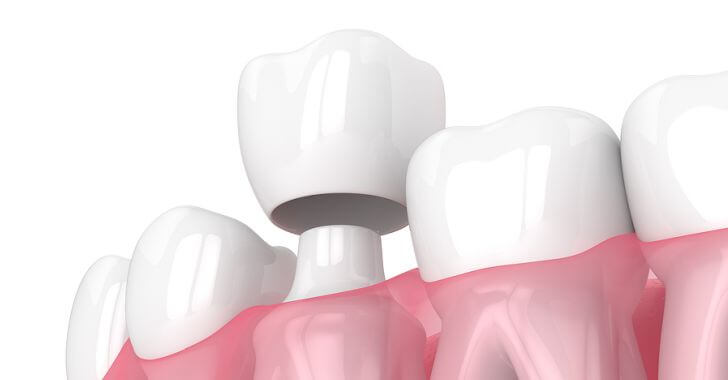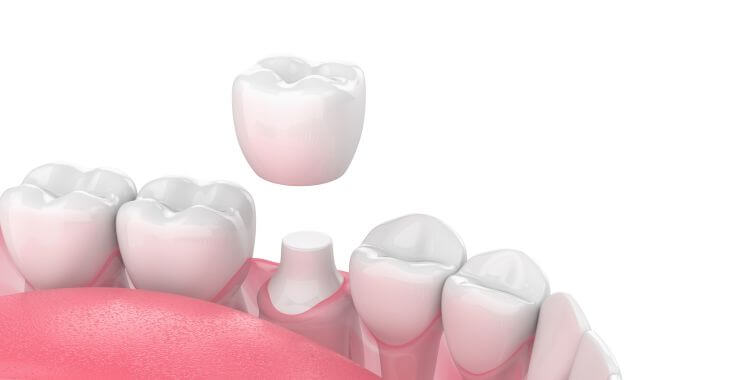Does Getting a Crown Hurt? Understanding the Process and Pain Management

Dental crowns are a common dental procedure used to restore damaged or decayed teeth. However, many people wonder, does getting a crown hurt, and if preparing a tooth for a crown is painful. Here is what you need to know about the process of getting a crown and pain management.
Is Getting a Crown Painful?
One of the most common questions patients have about getting a crown is whether the procedure is painful. The good news is that with modern advancements in dentistry and pain management techniques, getting a crown is typically not painful.
Your dentist will use local anesthesia to numb the area around the tooth being treated, ensuring that you do not feel any pain during the procedure. Most dental offices will apply a topical numbing agent before performing local anesthesia injections to completely numb the tooth.
Additionally, many dental offices offer sedation options for patients who experience anxiety or discomfort during dental procedures, further minimizing any potential pain or discomfort. These options can include nitrous oxide, oral conscious sedation, and IV sedation.
Does Preparing a Tooth for a Crown Hurt?
Another concern that patients often have is whether preparing a tooth for a crown hurts. The process involves removing a small amount of enamel and tooth material to create space for the crown to fit properly.
While some patients may experience minor discomfort or sensitivity during this process, it is typically not painful. Your dentist will use local anesthesia to numb the area, making the procedure as comfortable as possible.
In some cases, patients may experience some mild soreness or sensitivity after the procedure, but this can usually be managed with over-the-counter pain relievers and typically resolves within a few days. Most patients have very little discomfort after receiving their dental crown.
Understanding the Process of Getting a Crown
To better understand whether getting a crown hurts, it is helpful to know what the process entails. The first step in getting a crown is a thorough examination by your dentist to assess the condition of the tooth and determine if a crown is the best treatment option.
If a crown is recommended, your dentist will begin by preparing the tooth by removing any decay or damage and shaping it to accommodate the crown. Once the tooth is prepared, your dentist will take impressions of the tooth and surrounding teeth to create a custom-made crown.
The impressions or digital 3D imaging are needed to make a crown that matches the size, shape, and color of your natural teeth. While you wait for your permanent crown to be fabricated at a dental lab, your dentist may place a temporary crown to protect the prepared tooth.
Pain Management Techniques During the Procedure
If a temporary crown is being used, it will be placed while the tooth is still numb from the preparation so there is no pain as it is placed. Most permanent crowns are made within a few weeks, and a second appointment is needed to remove the temporary and place the permanent crown.
During the crown placement procedure, your dentist will use various pain management techniques to ensure your comfort. Local anesthesia is commonly used to numb the area around the tooth being treated, preventing you from feeling any pain during the procedure
Post-Procedure Pain Management
After the temporary crown placement procedure, it is normal to experience some mild soreness or sensitivity in the treated tooth and surrounding area. Your dentist may recommend over-the-counter pain relievers such as ibuprofen or acetaminophen to help alleviate any discomfort.
Additionally, you can apply ice packs to the outside of your face to reduce swelling and relieve pain. It is essential to follow any post-procedure instructions provided by your dentist and avoid chewing on hard or sticky foods until your permanent crown is placed.
There is typically very little pain or discomfort after the permanent crown is placed. Most discomfort experienced after a crown procedure is from the initial preparation of the tooth, not the placement of the crown.
In response to “Does getting a crown hurt?”, thanks to advancements in dentistry and pain management techniques, it is typically not a painful procedure. Local anesthesia is used to numb the area around the tooth being treated, ensuring that you don’t feel any pain during the procedure.
While some patients may experience minor discomfort or sensitivity after the initial procedure, this can usually be managed with over-the-counter pain relievers and typically resolves within a few days.

If you have any concerns about pain or discomfort during a dental crown procedure, be sure to discuss them with your dentist. Your dentist can provide personalized care to ensure your comfort throughout the process and recommend pain management options during the recovery and healing period.
The information provided on this website, including text, graphics, images, and other materials, is intended solely for informational purposes and should not be used as a substitute for professional medical advice, diagnosis, or treatment.




)